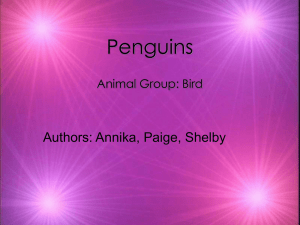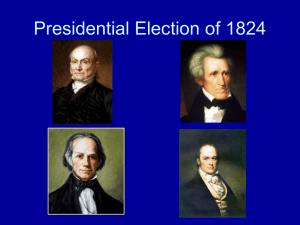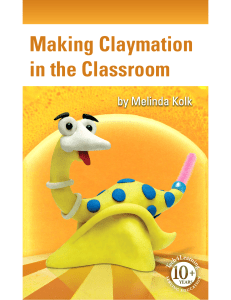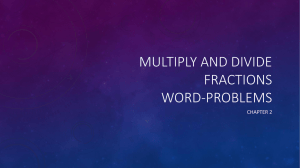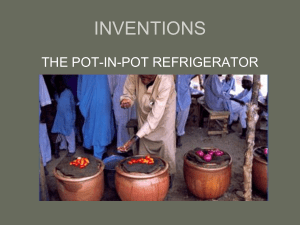PowerPoint
advertisement
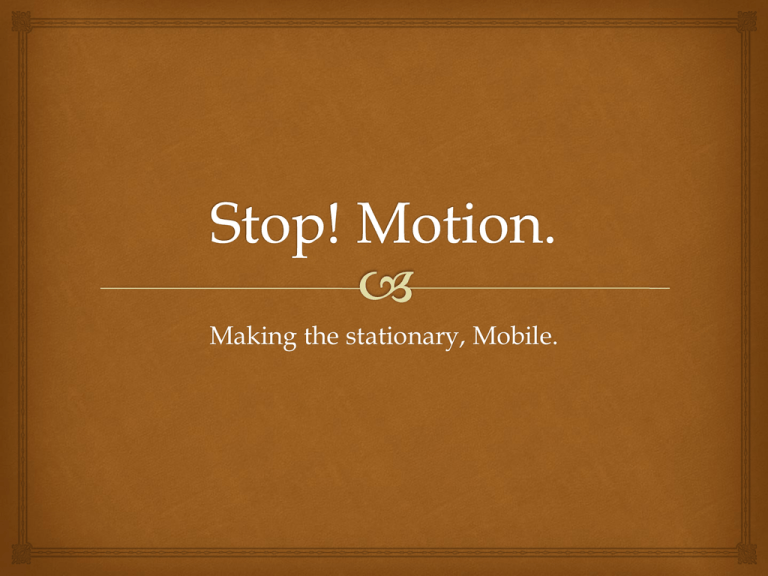
Making the stationary, Mobile. Animation Animation is the creation of an illusion of movement by assembling a sequence of still images. There are many different ways to create animation, some easier than others. What are some examples of animation that we still see today? This illusion is created by a concept called Persistence of Vision. What is persistence of Vision? The process for when light’s stimulus lingers on the retina slightly longer than it actually shines on the eye. This is also the same process that makes you see a dark spot when you look away from a bright light source. For this principle to fully work, the eye needs to “see” at least 10 Frames Per Second (FPS) At 24 – 30 Frames Per Second, creates a completely illusionary perception of motion. Beta Movement and Closure In 1912 Max Wertheimer did an experimental study on Seeing motion, whereby two or more still images are combined by the brain into surmised motion. After being asked what they say, the audiences will generally claim they saw the image move. Max Wertheimer also founded the Gestalt movement, which theorizes that the mind will “fill in the blanks” when it perceives a partial object. Gestalt Closure Example Kineograph (Flipbooks) Relying solely on the user, a flip book is one of the earliest forms of animation. A flip book is a series of pictures, one page after another, that has similar images that progress an action. Although it takes little to create (paper and a pencil) there is a high difficulty in creating similar images. It is also very time consuming. Zoetrope Invented in 1834 by William George Horner, the Zoetrope consisted of a series of pictures on a paper strip arranged on the inside of a revolving drum. The drum had small slits you could look through to see the pictures. A strip with 12 images will produce a moving subject that appears to progress forwards. Zoetrope The Thaumatrope The Thaumatrope is a disc with different images on either side with strings attached at both ends to allow it to be spun at a rapid rate. The Thaumatrope was a popular toy during the Victorian era. As the disc is spun, the images “blend” together to create one picture. We will now create this illusion by creating our own Thaumatrope. Bird in a Cage Step 1: - If not already provided, cut a 3 inch diameter circle out of a strong card stock paper. Step 2: - On one side of the circle, draw a birdcage. (Follow illustrations A – C) Step 2 A: Bird in a Cage Step 2 B: Step 2 C: Bird in a Cage Step 3: - Flipping the circle over on the other side so the birdcage is upside down, draw a bird on the other side of the circle. (Follow steps A-F) Step 3 A: Draw a Circle in the center Bird in a Cage Step 3 B: - Draw a triangle to make a tail. Step 3 C: - Add another triangle for the beak. Bird in a Cage Step 3 D: - Draw a curved line for the wings and chest. Step 4 E: - Be sure to add feet and eyes! Bird in a Cage Step 3 F: - Finally, add a perch for your bird to sit on. Other Examples of Stop Motion Film/video: All film and video is made up of individual frames. If our eyes and brains worked quicker, the films and cartoons we watch would be a parade of still images. These frames leave their unmoving ghosts frozen in the eye until the next image flashes before it, until the brain is tricked into seeing one thing moving, instead of many things standing still. Animation: Walt Disney had to meticulously draw each frame, or cell. Computers: Some flash images move at 15 FPS. That is why you see a flicker. Many digital “live” media move much quicker. 60 FPS will be so quick, your eye will not be able to tell there is a space in between the images. Claymation Claymation has been around since 1912 with the stop motion film Modeling Extraordinary. It is still a very popular medium today. Some very popular films including Wallace and Gromit are still produced and loved today. Wallace and Gromit is a popular British stop motion animated series, and has been used to both promote stores and advertise products. Claymation Although claymation can get very complex, a simple model with a simple task can best be used to demonstrate this artform. Using modern digital technology, the creation of a claymation video can now take hours, rather than months. Claymation Penguins Step 1: Roll out 6 – 7 ounces of the black modeling clay with your hands so it can easily wrap around the styrofoam egg. Claymation Mouse Step 1: Cut the styrofoam egg in half along the longest diameter of the egg Claymation Fish Step 1: Cut the styrofoam egg lengthwise (along the lager diameter) approximately ¾ of the way down. The flat side will function as the stable bottom to your fish. Claymation Penguins Step 2: Wrap the flattened black modeling clay around the foam egg. Smooth the clay around so it creates a pear shape. Claymation Mouse Step 2: Roll out about 6-7 ounces of the gray modeling clay with your hands so it can easily wrap around the egg half. Claymation Fish Step 2: Roll out 6-7 ounces of the colorful modeling clay with your hands so it can easily wrap around the egg. Claymation Penguins Step 3: Flatten most of the provided white clay out into the shape of a figure 8. (Save some for the eyes) The final shape should be very thin and have an hourglass figure. Claymation Mouse Step 3: Wrap the flattened gray modeling clay around the foam egg half. Smooth the clay around so it crates a drop shape with a very flat bottom. Claymation Fish Step 3: Wrap the flattened colorful modeling clay around the foam egg. Smooth the clay around so it creates a pear shape. Claymation Penguins Step 4: Attach the white clay to the bottom part of the back pear shape. This is the penguin’s “tuxedo shirt”. Make sure you do not smooth the white clay into the black clay. Claymation Mouse Step 4: Take a small piece of pink clay (or other color) to create a small nose for the tip of the drop shape. Claymation Fish Step 4: Stick 2- 1” skewers into the bottom side of the thick shape. This will be used hold the pectoral fins (the models “feet”) in place. Claymation Penguins Step 5: Stick the 2” skewer (no pointy end) through the top (about ¾ of the way up from the bottom) of the pear shaped model. It should not go into the white clay. Claymation Mouse Step 5: Roll out the rest of the pink (or other color) clay to make a snake like figure. This is the tail. Attach it to the thicker back end of the mouse. Make sure it isn’t too thin, so you can later manipulate it. Claymation Fish Step 5: Shape 2 packing peanuts to approximately ½” long, and ¼” wide and thick. This will be the skeleton for the pectoral fins. Claymation Penguins Step 6: Shape the packaging peanuts so that they’re approximately 1” – 1 ½” long, and about ½” thick. This will function as the skeleton for the flippers. Claymation Mouse Step 6: Stick 4 - 1” skewers (two on each side) behind and above the nose. These will function as the wiskers. Claymation Fish Step 6: Create 4 fins. 2 pectoral fins to be shaped around your foam from step 5. 1 dorsal fin to be attached to the top of your fish’s body, and 1 tail fin attached to the back. The tail fin can attach vertically or horizontally. Claymation Fish Step 6 A: Pectoral Step 6 B: Dorsal Claymation Fish Step 6 C: Tail Claymation Penguins Step 7: Use the rest of the black modeling clay (save two dots for the eyes)v to form the flippers around the foam shaped in Step 6. Claymation Mouse Step 7: Place two white dots above and behind the wiskers. These will be the base of the eyes. Attach two black clay dots in the center of the white clay to form the pupils. These should not be smoothed out. Claymation Fish Step 7: Place two small white dots on the front or side of the large side of the pear. This is the fish’s eyes. Place two small black dots in the center of the white clay to function as the pupils. Thes should not be smoothed out. Claymation Penguins Step 8: Attach the newly created flippers to the skewer ends. They should remain mobile, so do not smooth the shoulders to the penguin body. They should be secure, yet loose enough to manipulate. Claymation Mouse Step 8: Place four triangles cut out of the orange crate paper under the mouse to create the feet. Claymation Fish Step 8: Carve in scales or fin design, or use leftover clay to add features (like a mouth) to your fish. Claymation Penguins Step 9: Place two small flattened white dots at the top of the body for the base of the eyes. Place two smaller black dots in the center of the white dots for the pupils. These should not be smoothed out. Claymation Mouse Step 9: Cut out 2 drop shapes out of the orange crate paper. The pointy end will stick into the clay somewhere behind the eyes. These will be the ears. Claymation Penguins Step 10: Place the orange crate paper feet at the bottom of your penguin model. Claymation Penguins Step 11: Place the Orange crate paper beak pieces where the mouth should go. These pieces can cut into the clay. Make sure they are secure enough to stay attached, yet loose enough to manipulate. Finished Menagerie Movement Practice moving your models very slightly, and where they are pliable. Think of simple objectives that result in action. Until you are well experienced at the craft, keep it simple. The more complex you get, the harder and more frustrating it will to complete the objective. Make sure you identify approximately how slow one second really is. The slower you move, the more smooth your animation will be.




